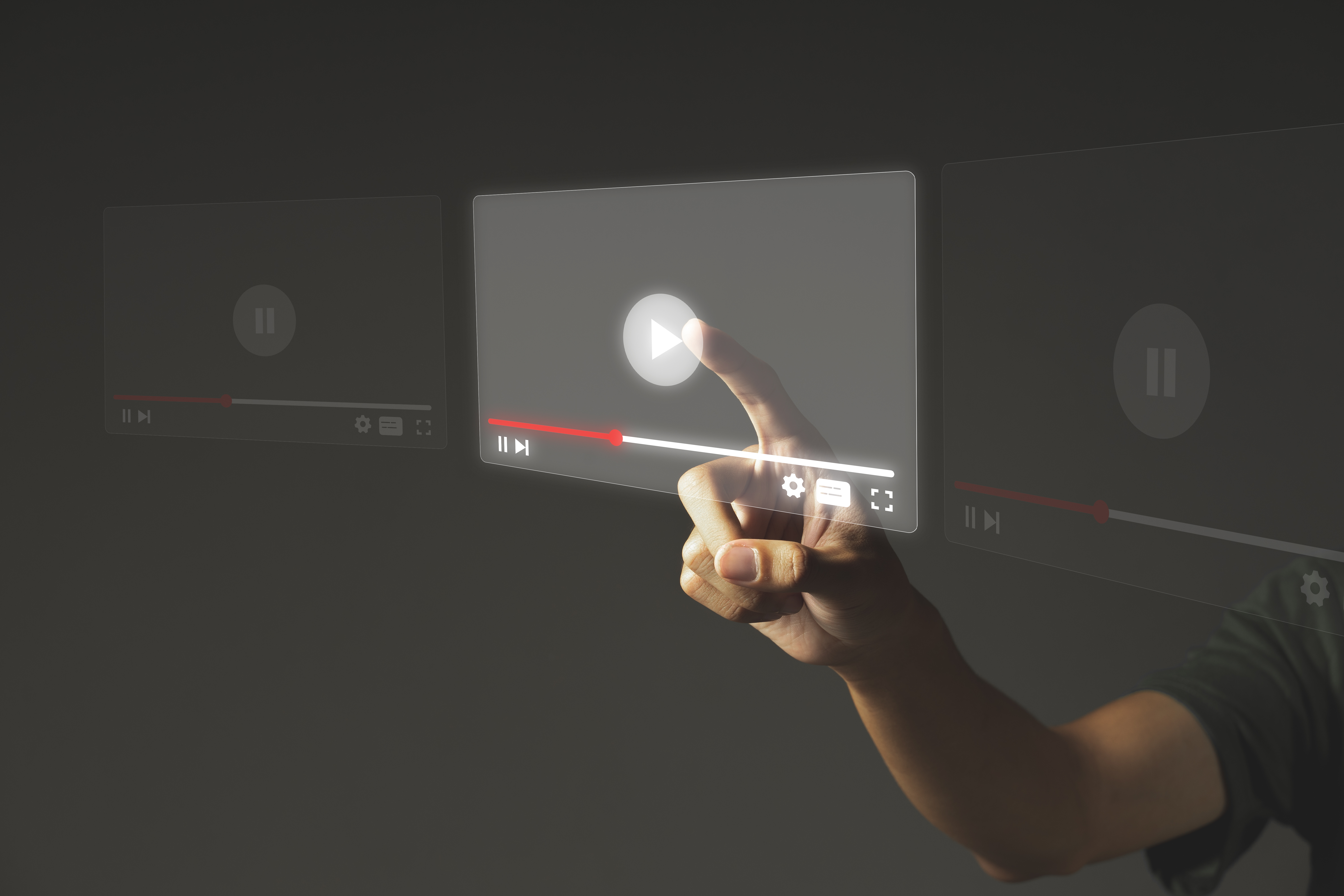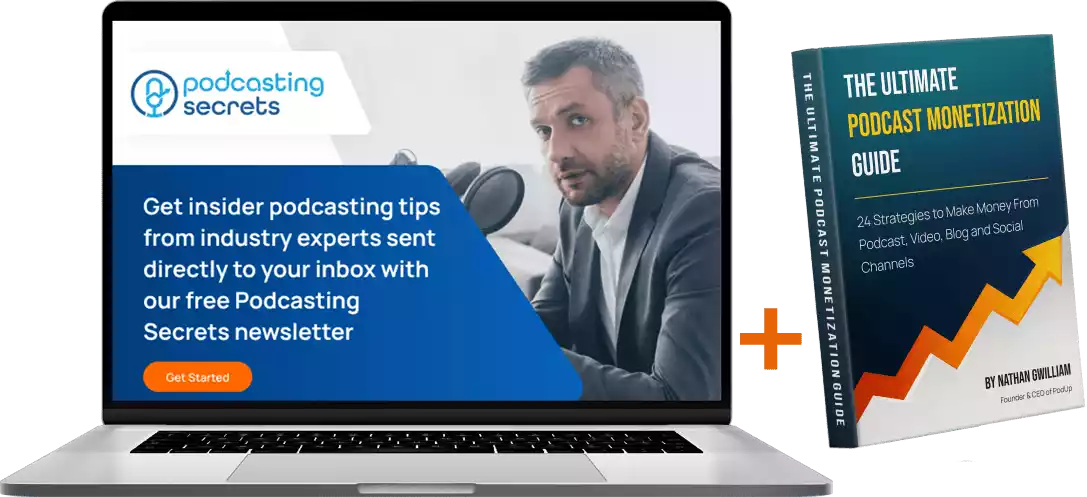
The Changing Landscape of Podcasting: Convergence of Audio, Video, and Beyond
As podcasting continues to explode in popularity, more and more podcasters are expanding into video to reach wider audiences. But is taking on both mediums the right strategy for every show creator? Does the term "podcasting" even still apply in a video context?
I explore these key questions and more in my insightful discussion with podcasting industry veteran Rob Greenlee. Rob has over 20 years of experience across leading companies driving podcasting strategy. So he provides a unique historical lens through which to examine the converging landscape of audio and video content creation and consumption habits of podcast listeners.
In this episode, Rob shares his predictions for the future of audio and video convergence in podcasting while weighing the potential benefits against common mistakes when adopting a converged approach. We also get into specific best practices for creators around live-streaming and using AI tools to simplify multi-format publishing.
Whether or not you are planning on incorporating an audio and video into your podcast strategy, I think you’ll find Rob’s wisdom highly valuable in mapping out a smart trajectory tailored to your show's goals. So let’s dive in!
Rob Greenlee's Background at the Forefront of Podcasting
Rob Greenlee has been on the front lines of podcasting since its early days. He’s filled senior roles driving content partnerships and strategy for major distribution platforms like Libsyn and Spreaker. He also currently co-hosts The New Media Show, a leading podcast covering digital media trends.
With this span working across top companies, Rob has had a unique vantage point from which to observe the industry’s progression. This experience lent a fascinating historical context to our discussion around the changing definition of “podcasting” itself.
Revisiting Podcasting's Early Audio and Video Convergence
I started our discussion by pointing out an interesting evolution around the definition of a "podcast" itself nowadays. Technically, a podcast refers to publishing a series of audio files via RSS feed. However, the term podcasting has come to encompass creating all kinds of content - whether audio, video, text, etc. - published across a variety of platforms.
Rob made an excellent observation here. He explained that in podcasting's early history prior to around 2007, shows often involved publishing episodes in both audio and video formats through their RSS feeds. But then in 2007 with the launch of YouTube, many of those existing video podcasters migrated over to focus their shows on YouTube exclusively, given its exploding popularity and reach at the time.
So for the last decade or so since then, podcasting has been perceived primarily as an audio-based medium by most people. But Rob argues we may now be coming full circle - returning to that early convergence between publishing episodes across both audio and video formats.
What's great is with the rise of platforms like YouTube, TikTok, Facebook, and Instagram make adopting both mediums easier than ever. And consumer media consumption habits continue shifting as well, with video growing rapidly. So an increasing number of audio podcasters are now expanding into complementary video distribution in addition to their audio show formats. Just as we saw in the initial early days of podcasting history over 15 years ago.
The Perception of “Podcasting” is Changing
For audiences, the term "podcast" seems to be evolving more into an expectation for customized content experiences vs. meeting rigid technical criteria. It's becoming defined more by the consumption experience it offers listeners rather than the strict production methodology behind it. This changing perception and embrace of on-demand audio, video and multimedia fuels the expansion we’re seeing nowadays across converged podcasting and video landscapes.
Take for example, Joe Rogan's massively popular show. He started out over a decade ago as an audio-only podcaster before expanding into video format on YouTube as well in recent years. Yet today, despite no longer having an RSS feed or open podcast distribution, most listeners would still consider Joe Rogan as one of the biggest names in podcasting. His show exemplifies how the definition of "podcast" is becoming less about specific technical delivery methods for audiences. Instead it's more about the expectation of on-demand content, regardless of whether audio, video or even textual formats.
Rob highlighted how platforms utilize various algorithms to recommend content to users based on their listening and viewing habits - not strictly along "podcasting" vs "streaming video" lines that creators may categorize their work into. Listeners just want engaging content served up to them on-demand, not really caring as much about the technical classification. You see this changing perception with many former audio-only podcasters migrating their shows under exclusive licensing deals to platforms like Spotify and Amazon Music.
Why Converge Audio and Video?
Next, Rob and I explored why more creators should consider adopting a converged audio + video strategy for their shows. He highlighted several key potential benefits:
- Reaching Wider Audiences: Distributing your show across both audio and video mediums allows you to access a larger combined market of potential listeners. Each format reaches different user bases opening up more awareness, subscribers and engagement.
- Multi-Tasking Audio & Focused Video: Audio caters well to busy listeners multi-tasking while on the move. Video enables deeper emotional connection through facial expressions and body language for more focused viewing activities. Expanding across formats allows you to serve both needs.
- Consumption Growth & Loyalty Differences: While video consumption has absolutely exploded over the last 5 years, audio formats like podcasts can encourage more listener loyalty and back-catalog consumption over time. Distributing across both allows you to balance growing reach with retention.
- Creative Expression: Producing shows in both formats enables you to better showcase your authentic creative self using the medium playing best to your personal strengths - whether improvisational audio flows or high quality visual production.
- Future-Proofing: As consumer habits, technologies and platforms continue rapidly evolving in years ahead, having diversified distribution across both audio and video future-proofs your show's longevity versus niche risks.
However, it is important to note that successfully adopting a converged podcasting and video workflow takes considerably more effort compared to focusing on just audio or video. You essentially have to produce two versions of one show - an audio recording edited for sound-only listeners and film a video version for viewers.
So creators should thoughtfully assess their personal bandwidth, creative comfort zones, and content goals when deciding what formats make strategic sense to branch into rather than blindly assuming more is always better. But the potential benefits revealed above showcase why at least considering some level of audio + video alignment tailored to your strategy can prove worthwhile.
The Challenges of Converging Audio and Video
Converging audio and video formats sounds great for widening your audience reach. But make no mistake - producing shows across multiple mediums introduces a whole new layer of complexity and challenges. What are some of the common struggles creators face?
- Time Commitment: It takes considerably more effort to produce both polished video episodes and tighter audio edits of your shows versus just a single format. The workload compounding between formats can become quite draining.
- Post-Production Complexity: The post-production editing process also gets exponentially more complicated, trying to manage edits tailored for the listening experience vs optimized cuts for visual impact.
- Creative Approach Differences: Determining the best on-camera performance, visual displays, and conversation flow variances to incorporate for video vs letting your natural chemistry and rapport shine through on audio requires continual testing and iteration.
- Ramping Video Presence: Stepping up on-camera presence with telegenic delivery, displays of emotion, and visual transcription of energy takes confidence and skill building - especially if coming from an audio-only background.
- Distribution Strategies: Figuring out the right mix of distribution platforms to publish your audio vs video episodes involves continual evaluation across rapidly changing landscapes and algorithm shifts.
That's a whole lot of additional complexity to onboard! So I asked Rob what guidance and he stressed that the most crucial thing is simply getting started in some small way rather than getting hung up overthinking everything needed for some "perfect" converged launch strategy.
Accept that you'll have a smaller audience in the beginning as you build creative skills across formats. The early stage in your podcast journey when you are relatively unknown is the best time to experiment. You have more room to make mistakes without losing listeners. Embracing imperfection and lasting progress over immediate unattainable perfection is key - especially early on.
The Future of Podcasting and Video Convergence
As we neared the end of our podcast discussion, I asked Rob where he see podcasting and the convergence with video heading in the years ahead? He shared two major predictions:
- Steady Transition from Audio-Only to Video Consumption: Rob believes over time, more and more podcast listeners will shift their consumption preferences towards favoring enhanced visual shows published on platforms like YouTube and TikTok over audio-only formats. However, he stressed that audio podcasting itself is not going anywhere - it will remain vital for unique use cases like listening during mobility where video isn't feasible.
- AI-Powered Creation Tools: We're already seeing rapidly improving AI tools that can automate tedious production tasks like transcribing show recordings or editing out filler words with just a click. Rob predicts advancing AI will soon allow nearly seamless automated publishing across audio and video output formats. For example, AI could take one core show recording and instantly generate both tightly edited audio episodes and video renders optimized for each medium.
Other emerging AI functionalities like vocal cloning even open up creative options like cost-efficiently producing the podcast transcribed into other languages at scale for global audiences. So in many ways, AI advancements seem poised to drive easier and more efficient multi-format publishing workflows to fuel further podcast and video convergence in coming years, according to Rob.
Whether you’re just starting out in podcasting or looking to expand an existing show, carefully evaluating where integrating complementary video components does or doesn't align with your goals is an important exercise. Audiences are increasingly consuming content fluidly across audio and video, so having a thoughtful omni-channel content strategy tailored to your strengths becomes crucial.
A huge thanks again to podcasting veteran Rob Greenlee for so generously sharing his real-world wisdom on emerging media production strategy. Be sure to follow Rob and his work on social media as well as on his website RobGreenlee.com.
Here are my key takeaways from this episode...
- Podcasting encompassing both audio + video isn’t new; it’s a return to the early days of the medium's beginnings.
- Audiences are coming to perceive and define "podcasts" more by convenient content delivery over rigid technical classifications.
- Each format - whether audio or video - has unique benefits. Strategically converge and diversify where it aligns to your show goals.
- Take small incremental steps to get started converging vs. overthinking perfection of every production detail, especially when just beginning.
- Live interaction facilitates connection. Inviting audiences into the behind-the-scenes process can uniquely build skills and rapport.
- Ongoing AI advancements promise to continue simplifying and automating multi-format publishing workflows in the years ahead.
If you're looking for a great all-in-one podcasting platform with 35 integrated modules, you can get a free trial a PodUp.com.
Thanks for joining us for this episode. I wish you success as you leverage AI for your podcast.




Comments